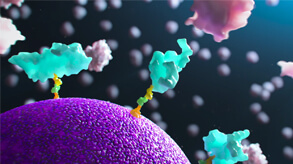Technical Notes
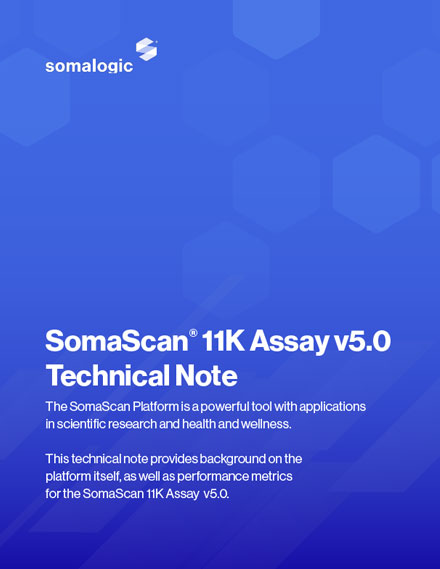
SomaScan® 11K Assay v5.0
The SomaScan® Platform is a powerful tool with applications in scientific research and health and wellness. This technical note provides background on the platform itself and performance metrics for the SomaScan 11K Assay v5.0.
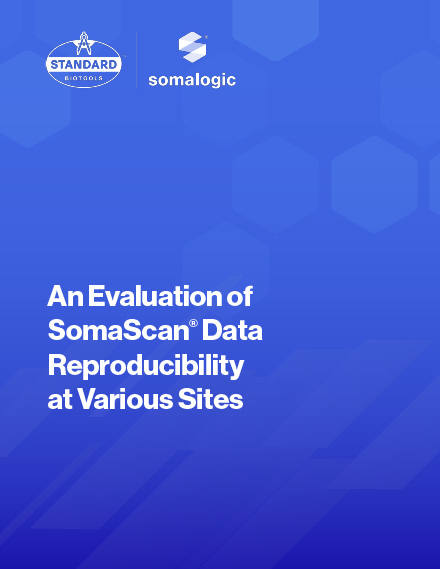
An Evaluation of SomaScan® Data Reproducibility at Various Sites
In this technical note, we investigate the performance of full SomaScan Assay data generated at two separate locations, utilizing the same control and clinical samples; this includes examination of specific analytes that may differ between sites and whether predictive models such as SomaSignal® Tests (SSTs) will produce the same result.
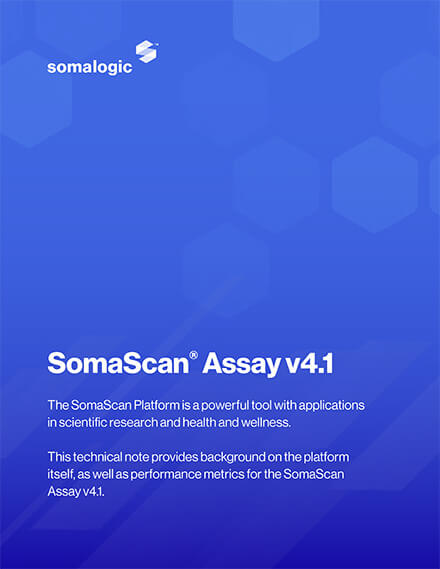
SomaScan® 7K Assay v4.1
The SomaScan® Platform is a powerful tool with applications in scientific research and health and wellness. This technical note provides background on the platform itself, as well as performance metrics for the SomaScan® Assay v4.1.
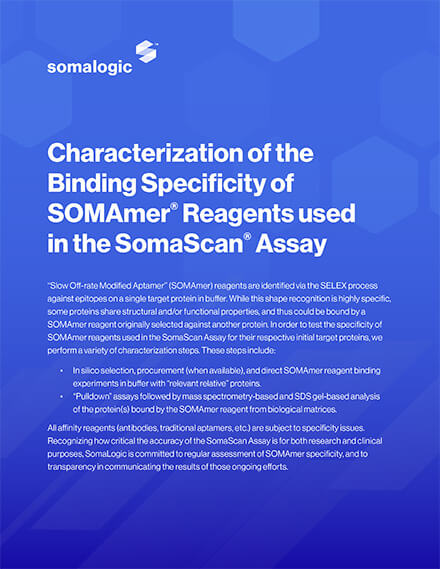
Characterization of the binding specificity of SOMAmer® Reagents used in the SomaScan® Assay
SOMAmer® (Slow Off-rate Modified Aptamer) Reagents are identified via the SELEX process against epitopes on a single target protein in buffer. While this shape recognition is highly specific, some proteins share structural and/or functional properties, and thus could be bound by a SOMAmer Reagent originally selected against another protein. In order to test the specificity of SOMAmer Reagents used in the SomaScan Assay for their respective initial target proteins, we perform a variety of characterization steps. These steps include: all affinity reagents (antibodies, traditional aptamers, etc.) are subject to specificity issues. Recognizing how critical the accuracy of the SomaScan Assay is for both research and clinical purposes, SomaLogic is committed to regular assessment of SOMAmer specificity, and to transparency in communicating the results of those ongoing efforts.
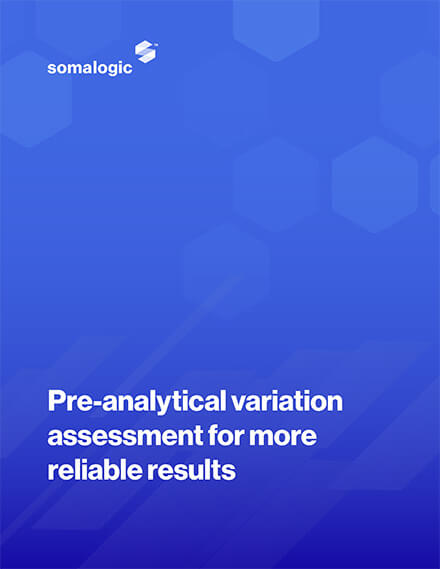
Pre-analytical variation assessment for more reliable results
In biomarker discovery, it is critical to assess any pre-analytical variation in order to avoid artificial bias in the intended measurements. Pre-analytical variation may arise from both avoidable and unavoidable factors, resulting in misleading data and incorrect conclusions.
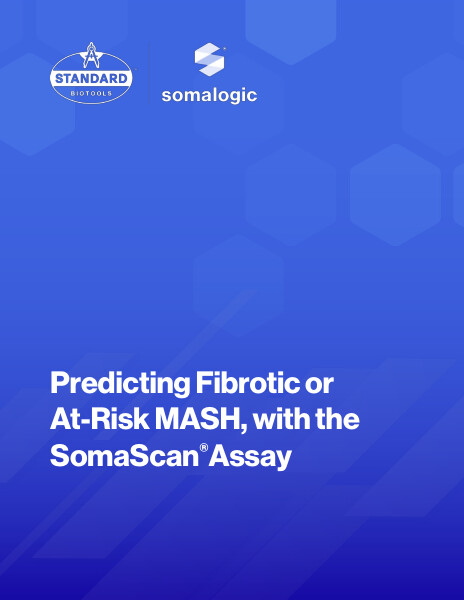
Predicting Fibrotic or at-risk MASH, with the SomaScan® Assay
Metabolic dysfuntion-associated steatohepatitis, MASH, previously called non-alcoholic steatohepatitis, NASH, is a combination of liver inflammation, cell destruction, and accumulation of fat and scar tissue in the liver. MASH can progress to advanced liver fibrosis and cirrhosis, leading to liver failure. The rapidly growing incidence of MASH worldwide is linked to the increase in type 2 diabetes and obesity, and it has become the most common chronic liver disease.
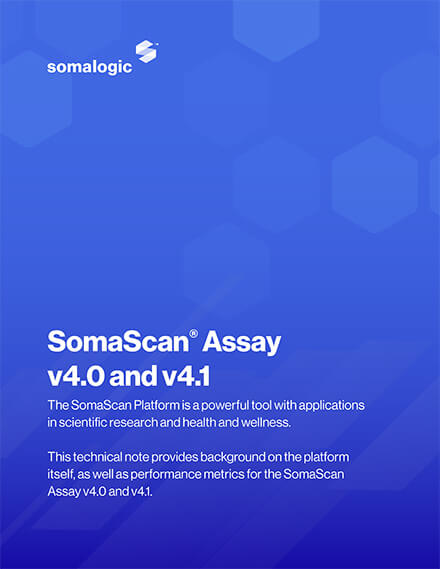
SomaScan® Assay v4.0 and v4.1
The SomaScan Platform is a powerful tool with applications in scientific research and health and wellness.
This technical note provides background on the platform itself, as well as performance metrics for the SomaScan Assay v4.0 and v4.1.
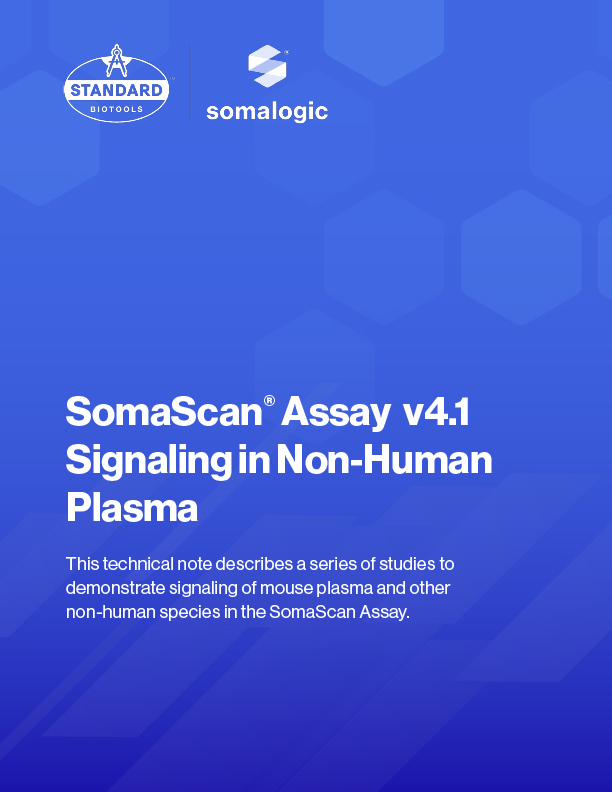
SomaScan Assay v4.1 Signaling in Non-Human Plasma
This technical note describes a series of studies to demonstrate signaling of mouse plasma and other non-human species in the SomaScan Assay.
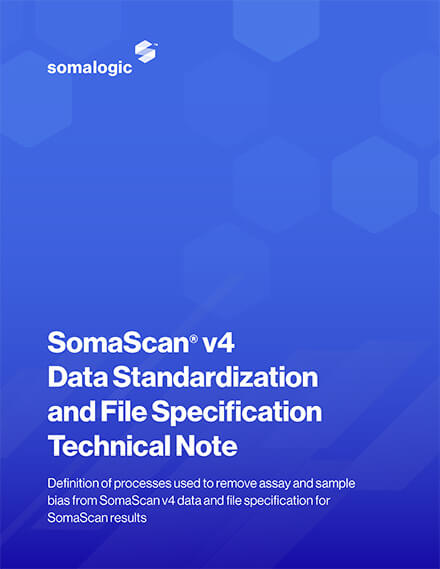
SomaScan® v4 data standardization and file specification technical note
Definition of processes used to remove assay and sample bias from SomaScan v4 data and file specification for SomaScan results.
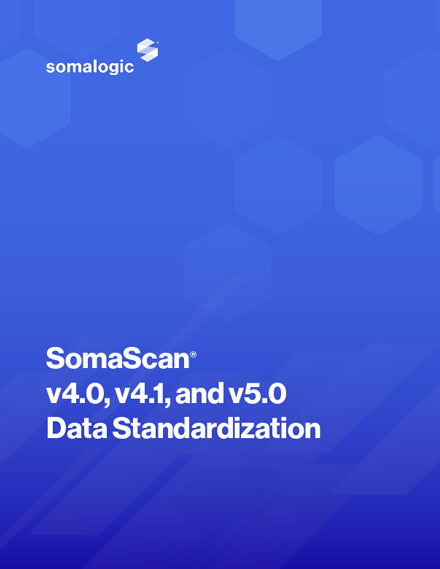
SomaScan® v4.0, v4.1, and v5.0 data standardization
Raw SomaScan Assay data may contain systematic biases from many sources, such as variation introduced by the readout, pipetting errors, inherent sample variation, or consumable reagent changes. Standardization is an important tool for removing nuisance variance.
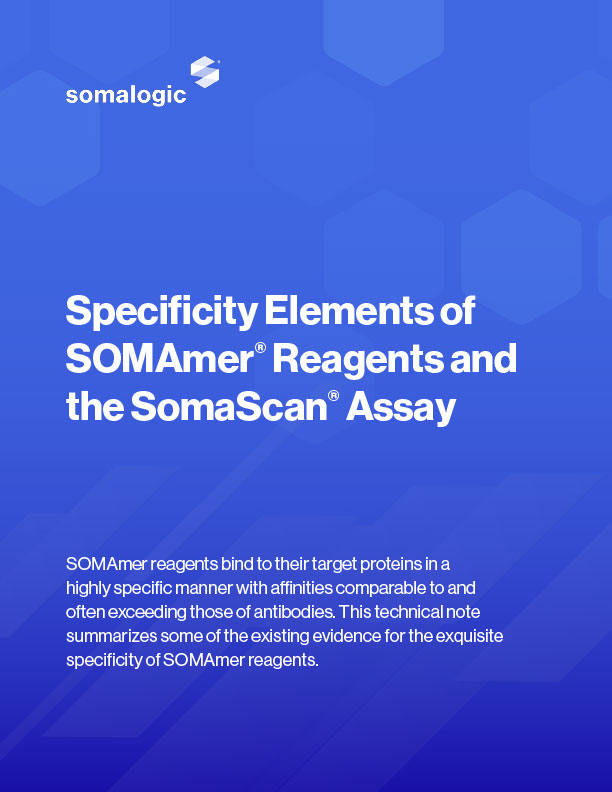
Specificity elements of SOMAmer® Reagents and the SomaScan® Assay
SOMAmer Reagents bind to their target proteins in a highly specific manner with affinities comparable to and often exceeding those of antibodies. This technical note summarizes some of the existing evidence for the exquisite specificity of SOMAmer Reagents.
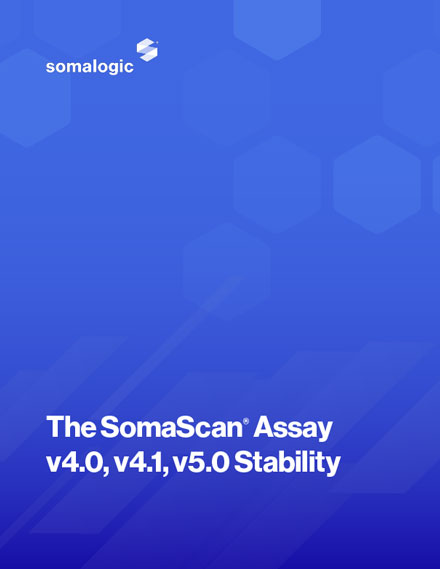
The SomaScan® Assay v4.0, v4.1, v5.0 stability
The SomaScan® v4.0 and v4.1 Assays are run using 96 well plates; eleven wells are allocated for control samples used to control for batch effects and to estimate the accuracy, precision, and buffer background of the assay over time. Five pooled calibrator replicates, three pooled quality control (QC) replicates, and three buffer replicates are run on every plate.
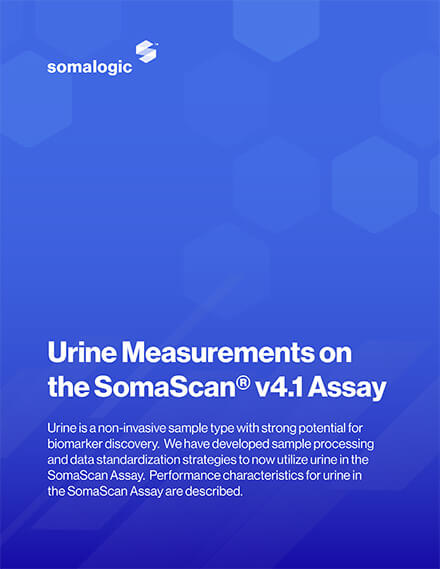
Urine measurements on the SomaScan® Assay v4.1
Urine is a non-invasive sample type with strong potential for biomarker discovery. We have developed sample processing and data standardization strategies to now utilize urine in the SomaScan Assay. Performance characteristics for urine in the SomaScan® Assay are described.

